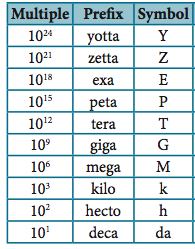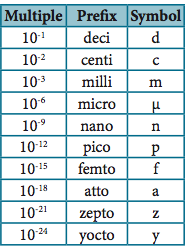Cards In This Set
| Front | Back |
|
What are the 7 fundamental SI units
|
M, kg, s, A, K, mol, cd.
|
|
Give examples of possible systematic errors.
|
[1]poorly made instruments, [2]poorly calibrated, [3]zero error(not calibrated scale, less/more than zero), [4]poorly timed, [5]parralax error
|
|
Give examples of possible random errors
|
Wrong data used, wrong equation, wrong theory, wrong math/computation, misreading scales
|
|
What is the difference between accuracy and precision?
|
Accuracy is how close a measurement is to the acceptance value and precision is how close measurements are to each other
|
|
State the two ways to reduce random errors.[2]
|
[1] use more sensitive equipment, [2] taking more measurements and use average data
|
|
What is the difference from a vector and scalar?
|
Vector his direction while scalar does not, but both have magnitude
|
|
What is a derived unit? Give example.
|
A combination of fundamental units. Newton(kg m s^-2), Pascal, Hertz, Joule
|
|
How do you graph uncertainty on a graph?
|
Error bars
|
|
How do you state a unit in SI format?
|
[1] never put "/" divide sign, always put as exponent
|
|
What are the prefixes for positive exponents?
|
 See pic |
|
What are the prefixes for negative exponents?
|
 Seepic |
|
What zeroes are significant in a decimal number [2]?
|
[1] zeroes after the decimal point AND after a nonzero number ie 0.04 or 0.0404 or 0.04040 [2] zeros between nonzero numbers ie 404 or 4.04 or 4.404
|
|
How do you get the absolute uncertainty?
|
Half of the smallest measurable measure
|
|
How do you get the relative uncertainty?
|
Divide absolute uncertainty to the measurement
|
|
If two quanities are multiplied how do you get the uncertainty of the product?
|
Add the relative uncertainties of each variable and multiply it by the product
|



